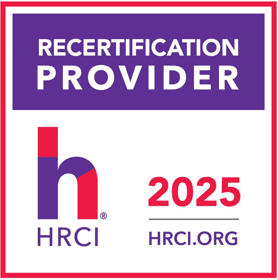If you go to the doctor, what does the doctor do first? The doctor takes your blood pressure, weighs you, takes your temperature, etc. In other words, the doctor is taking your “baseline metrics” to identify potential medical issues, and to determine how these metrics might be affecting your health.
Similarly, to determine the “talent pain points” and metrics that affect the “talent health” of an organization, the following are 15 baseline metrics that can be gathered to begin (or to expand) an effective Talent Benchstrength strategy:
- Over the past three years, how much has your organization spent on executive search fees and hiring bonuses combined?
- What is the average time-to-fill for leadership positions in the organization? (Note: Time-to-fill is the period of time from position vacancy to the date the position is filled.)
- What percentage of the time are you filling positions with an internal candidate vs. the percentage of the time you are hiring an external candidate for open positions? Of the positions filled with an internal candidate, how many of these positions were filled with a previously identified successor candidate?
- What is the cost comparison and ratio of budget / funds spent on employee relations in the organization compared to employee and leadership development? (Consider staff expenses, legal expenses and all other budgeted resources.)
- What is the cost comparison and ratio of budget / funds spent on external talent acquisition overall in the organization compared to talent benchstrength practices? (Consider staff expenses, fees and all other budgeted resources.)
- What is the estimated average cost to fill a management position? (Consider hiring bonuses, recruiting costs, marketing costs, interviewing time, onboarding expenses, recruiting site fees, recruiting search firm fees, etc.)
- What percentage of your leaders will be eligible to retire each year in the next 5 years? Over the next 1-3 years, will more leaders become eligible to retire at the executive-senior level, at the mid-leadership level, or in key positions in the organization?
- How many open leadership positions did you fill last year? How many leadership positions are you expected to / budgeted to fill this year? How does this number compare to the overall number of leaders in your organization?
- What is the number of / percentage of leaders who leave the organization after less than one year of employment?
- What positions are the most difficult to fill? Which positions in the organization do you interview for and hire for most frequently in the organization?
- Are there any employee engagement surveys and/or exit interview data that provides indicators regarding employee satisfaction levels with their career and development progress in the organization?
- What are the diversity statistics overall in the organization overall and how do these overall statistics compare to the diversity statistics at the leadership level?
- Does your organization have a growth strategy or a reduction strategy for the next 1-3 years? Is your organization planning to expand in new geographic areas in the next 1-3 years? If so, where will the organization be expanding their operations and talent?
- What percentage of employees have an annual career and development discussion with their manager at least annually, resulting in a new / updated Individual Development Plan (IDP)? What percentage of employees complete the actions in their IDP?
- What percentage of your leadership population is considered to be high vacancy risk? What percentage is considered to be moderate vacancy risk? What percentage is considered to be low vacancy risk?
Talent Benchstrength Truths
My experience as an international talent benchstrength and succession planning speaker, consultant and author is that once an organization plans and implements thorough (but not complicated) Talent Review meetings and Succession Management practices, they wonder how they ever got along without these Talent Benchstrength functions before. Participants often comment, “Why haven’t we been having these discussions all along?” after they attend their first Talent Review meeting.
The truth is that the core of the Talent Benchstrength strategy—which is to provide structure, criteria and processes for leaders to get together to discuss and to plan for talent needs effectively—is a simple but critical strategy for the organization. Leaders in every organization plan and discuss budget needs and business strategy, so why would an organization not apply these same planning and discussion actions to the critical talent needs in the organization?
The truth is that Talent Benchstrength and Succession Management practices are growing in corporations, as more and more businesses realize that the knowledge, the innovative ideas and the skills of our employees are increasingly the most important competitive advantage for the organization. Don’t leave this competitive advantage to chance—use the same type of planning, discussion, analysis and reporting tools that are used in other business functions to identify and develop a Talent Benchstrength strategy in your organization.




